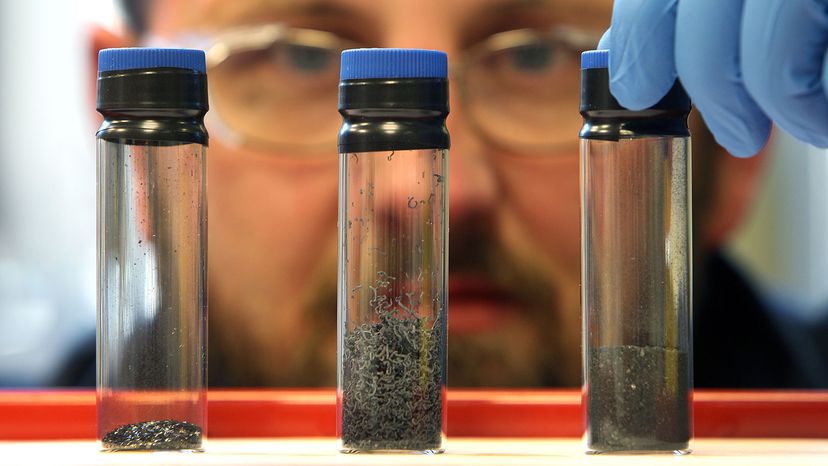Why is Graphene a Super material?
Measuring in at just one atom thick, a sheet of graphene checks all the boxes of a super material:
- Graphene is 200 times stronger than steel by weight.
- It is 1,000 times lighter than paper.
- It is 98 percent transparent.
- It conducts electricity better than any other known material at room temperature.
- It can convert light at any wavelength into a current.
- And, last but not least, graphene is made from carbon, the fourth most-abundant element in the universe, so we’re not likely to run out
Graphene gets its superpowers from its structure. If you could zoom in close enough, you’d see that a sheet of graphene looks like an atomic-scale honeycomb. Individual carbon atoms are arranged in a hexagonal pattern that resembles chicken wire. Each carbon atom in a sheet of graphene is covalently bonded to three other carbon items, which gives the material its incredible strength.
Why does graphene conduct electricity so well? Again, because of the way those carbon atoms are bonded. Each carbon atoms has four electrons in its outer shell, but only three of those electrons are shared with its neighboring three carbon atoms. The remaining electron is called a pi electron and is free to move in three-dimensional space, which allows it to transmit electrical charges across the sheet of graphene with almost no resistance. In fact, graphene is the fastest conductor of electricity at room temperature of any known substance.

The ‘Magic Angle’
A recent discovery may add yet another superpower to graphene’s brag list. A team at Massachusetts Institute of Technology (MIT) was experimenting with dual-layered graphene— two layers of single-atom graphene stacked together — when they stumbled upon a new, nearly magical property of graphene. When the layers are rotated slightly out of line with each other — a displacement of exactly 1.1 degrees — the graphene becomes a superconductor. Superconductors are the rarest class of materials that conduct electricity with absolutely no resistance and zero heat.
The discovery of graphene’s “magic angle” sent shockwaves through the scientific community. Although the experiment was conducted at extreme low temperatures (close to 0 degrees Kelvin or minus 459.67 F), it opened up the possibility that by combining graphene with other superconductive elements, we’re closer than ever to room-temperature superconductivity. Such an achievement would radically improve the energy efficiency of everything from gadgets to cars to entire electric grids.
How Might Graphene Transform Technology?
Superconductivity is still decades away, but revolutionary graphene-based products are coming to the market much sooner, says Andrea Ferrari, a professor of nanotechnology and director of the Cambridge Graphene Centre.
“By 2024, there will be a variety of graphene products on the market,” says Ferrari, “including batteries, photonics, night vision cameras and more.”
Consumers have been eagerly awaiting graphene-based batteries for years. The lithium-ion batteries in all our gadgets are relatively slow to charge, lose their juice quickly and burn out after a set number of cycles. That’s because the electrochemical process that powers lithium-ion batteries generates a lot of heat.
But since graphene is the world’s most efficient electrical conductor, it produces a lot less heat when charging up or discharging electricity. Graphene-based batteries are promising five times faster charging speeds than lithium-ion, three times longer battery life, and five times as many cycles before they need to be replaced.
Electronics companies like Samsung and Huwei are actively developing graphene-based batteries for smartphones and other gadgets, but the earliest those will hit the market is 2021. As for graphene batteries in electric cars — which could dramatically increase their driving radius — that’s still a few years off. An entire industry has been built on lithium-ion technology and it won’t change overnight.
“The battery industry is very conservative,” says Jesus de la Fuente, CEO of Graphanea, a company that manufactures and sells pure graphene and graphene-based chips to academic researchers and R&D departments. “It might change the composition of batteries a few times every five to ten years, which makes it very difficult to introduce new products in this industry.”
There are a few graphene-based batteries on the market, including some wired and wireless chargers from a company called Real Graphene, but those are only the tip of the iceberg, says Ferrari, who is also the science and technology officer for the Graphene Flagship, a 1-billion-euro collaboration by the European Union to speed the development of graphene technology. Research partners with the Flagship are already making graphene batteries that outperform today’s best high-energy cells by 20 percent capacity and 15 percent energy. Other teams have built graphene-based solar cells that are 20 percent more efficient at converting sunlight to electricity.
Other Uses for Graphene
While graphene batteries might be first to market, researchers are busy developing countless other applications for this miracle material.
Biosensors are a big deal. Imagine an incredibly thin and flexible chip that can be injected into the bloodstream to monitor real-time health data like insulin levels or blood pressure. Or a graphene interface that sends signals back and forth to the brain to detect an upcoming epileptic seizure or even prevent it. Thin, stretchable sensors can also be worn on the skin or woven into the fabric of clothes.

Photonics is another field that’s already incorporating graphene. By integrating graphene into light-sensitive chips, cameras and other sensors can greatly improve sensitivity to even the faintest light waves across the visible and invisible spectrum. That will not only improve the image quality of cameras and telescopes, but also medical imagery.
Filtration is yet another promising application of graphene. Simple water purification filters built with graphene polymers can bind to organic and inorganic contaminants in drinking water. Researchers at the Graphene Flagship have also created desalinization technologies based on graphene diodes that can remove over 60 percent of salt from seawater for agricultural and other uses.
All these developments will take time, but Ferrari at the Cambridge Graphene Centre is confident that graphene will live up to its hype. In fact, he is equally excited about the yet-undiscovered properties of the estimated 2,000 other monolayer materials that are also being isolated, sticky tape method or otherwise.
“We say graphene, but we’re really talking about a large number of options that are being explored,” says Ferrari. “Things are moving in the right direction.”


 Users Today : 368
Users Today : 368 Total views : 468811
Total views : 468811